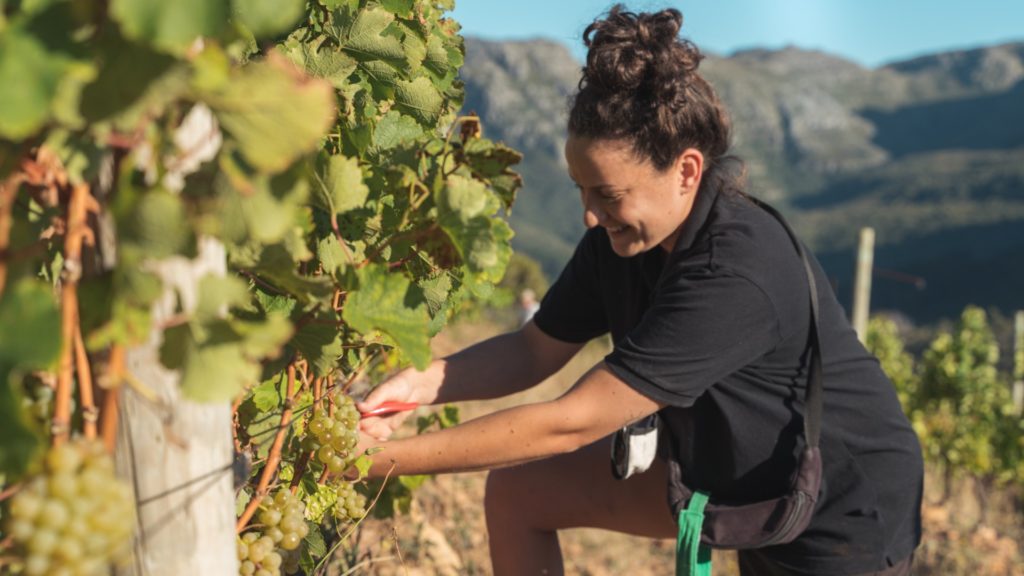The 2021 Harvest – Megan Van Der Merwe

Share
We asked our winemaker and viticulturist Megan Van Der Merwe to tell us a little bit about what’s been happening in our vineyards during the first process of our 2021 Harvest:
CHAPTER 1
Navigating the all-sobering prohibition on the sale of alcohol in South Africa, this last year has really seen us make some tough decisions in the vineyards. Just having finished the picking of our white varieties, we are currently about a quarter of the way through the most magical time of the year – harvest.
Harvest is the acme of an entire year in the vineyard. It is the moment where we get to reflect on every decision made and every intervention applied in the last calendar year. It is a measurement of our willingness to adapt as well as a measurement of our strength as a team – a collective set of hands working towards the same goal. It’s where, momentarily, farming stops and winemaking begins.
The 2021 season started with a cold, wet, winter that filled up soil reserves and provided sufficient cold units to break dormancy. The late cooler conditions continued well into spring, meaning that budbreak and initial growth were both delayed. Towards late October the moderate temperatures and sufficiently filled soil profiles led to rapid vineyard growth and therefore the need to closely manage fungal diseases, weeds and vineyard canopies – all extremely labour-intensive practices with increased fungicide- and labour bills felt all over by an industry already crippled by the continued ban on alcohol.
The period of end October to beginning November was governed by some serious wind, leading to diminished flowering and fruit set, especially higher up on our more Westerly slopes. Veraíson was, as expected, about a week late for whites, but with wind speed well over 5m/s for a period of nearly two weeks, vines closed their stomata as a biological defense mechanism against increased evapotranspiration, and the entire Veraíson process paused for the period, pushing harvest back even further.
After February, the summer growing conditions have been cool and moderate with nerve wracking amounts of morning mist and high levels of humidity forcing us to sample as often as possible, practice patience, completely reverse block orders for pickings, picking in smaller batches than before, yet eventually getting the grapes into the cellar at the optimum ripeness, HEALTHY.
In the humble grapes ripening process, we refer to phenolic (or physiological) ripeness and to sugar ripeness. The former refers to the ripening of tannins in the grape skins, -seeds and stems, and the latter to the accumulation of sugars and metabolism of acids. For the first time in my career I found that the berries were physiologically ripe at much lower sugar levels, meaning that even though sugar ripening is late, we can still pick for great flavor concentration on brilliant acid levels, and pull off lower alcohol wines while doing so!
The success of this vintage will definitely depend on the amount of soil stuck to your winemaker’s boots, and I am happy to report that mine are well worn!
Now for some reds…

